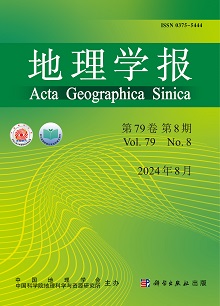Retrieval of Soil Moisture in the Yutian Oasis, Northwest China by 3D Feature Space Based on Optical and Radar Remote Sensing Data
Aili, Yilizhati , Nurmemet, Ilyas , Li, Shiqin , Lv, Xiaobo , Yu, Xinru , Aihaiti, Aihepa , Qin, Yu
2025-03-16 null null 14(卷), null(期), (null页)
Soil moisture in arid areas serves as a vital indicator for assessing hydrological scarcity and ecosystem vulnerability, particularly in Northwest China (NW China), where water resource deficits critically exacerbate environmental fragility. Soil moisture retrieval through remote sensing techniques proves essential for formulating sustainable strategies to enhance local environmental management. This study presents an innovative fusion framework integrating Sentinel-2 optical data and Radarsat-2 PolSAR (Polarimetric Synthetic Aperture Radar) data to establish a three-dimensional (3D) optical-radar feature space. The feature space synergistically combines SAR backscattering coefficients (HH polarization modes), polarimetric decomposition (volume scattering components of van Zyl), and optical remote sensing indices (MSAVI and NDVI). Through systematic analysis of feature space partitioning patterns across soil moisture gradients, the Optical-Radar Soil Moisture Retrieval Index (ORSMRI) was proposed, and fitting analysis was conducted by measured soil moisture. The results confirmed consistency between ORSMRI-derived retrieved soil moisture and measured soil moisture, with ORSMRI1 attaining R2 = 0.797 (RMSE = 3.329%) and ORSMRI2 reaching R2 = 0.721 (RMSE = 3.905%). The soil moisture in the study area was retrieved by applying the proposed ORSMRI and utilizing its linear correlation with soil moisture. The distribution of soil moisture showed a trend of being higher in the south than in the north, and higher in the west than in the east. Specifically, low soil moisture is generally concentrated in the northern and southwestern parts of the oasis, while high soil moisture is primarily concentrated in the central part of the oasis.
相关推荐
- Multi-Source Attention U-Net: A Novel Deep Learning Framework for the Land Use and Soil Salinization Classification of Keriya Oasis in China with RADARSAT-2 and Landsat-8 Data [2025-03-16]
- Spatiotemporal Dynamics and Driving Factors of Soil Salinization: A Case Study of the Yutian Oasis, Xinjiang, China [2025-03-16]
- Soil salinity estimation based on machine learning using the GF-3 radar and Landsat-8 data in the Keriya Oasis, Southern Xinjiang, China [2025-03-16]
- Seasonally extreme temperature events accelerate in arid northwestern China during 1979-2018 [2025-03-16]
- An Efficient Approach for Inverting the Soil Salinity in Keriya Oasis, Northwestern China, Based on the Optical-Radar Feature-Space Model [2025-03-16]



